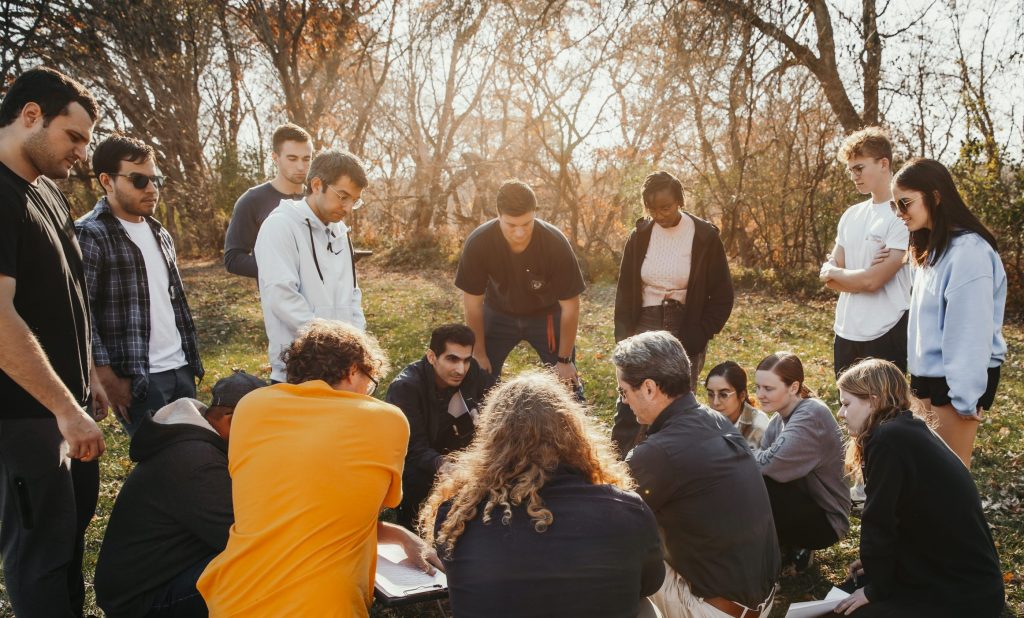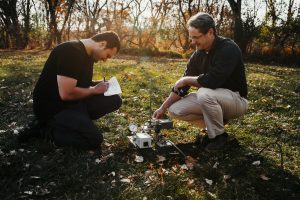How big should a new foundation be? Students determine ideal foundation size in soil strength course
Author: Sarah Hays
Author: Sarah Hays

Soil is at the foundation of all our infrastructure – so testing its strength before building structures is critical. While a common practice is to extract soil samples and test them in the laboratory, in situ devices allow geotechnical engineers to test soil strength without ever removing the soil from its natural state. And in the Department of Civil, Construction and Environmental Engineering, students are learning all about these testing methods in class.
In Civil Engineering 462/562, Site Evaluations for Civil Engineering Projects, seniors and graduate students use hands-on methods to learn various processes for testing soil in-ground. Taught by associate professor Jeramy Ashlock, the class is implementing CCEE Distinguished Professor Emeritus Richard Handy’s in-ground soil strength test, known as the Borehole Shear Test, after digging a small hole, known as a borehole, for testing. While lab tests can be accurate if sample disturbance is carefully minimized, this method of in-ground testing creates less disturbance to the soil and provides results in about an hour compared to days for typical lab tests. The Borehole Shear Test allows students to measure the soil’s shear strength by applying stresses to the walls of the borehole.
“We are testing the soil while it is still in the ground,” Ashlock said. “Through the borehole, we are applying normal stress to the soil, then we wait for any increased water pressure to dissipate, and then the students turn a crank to raise the device and apply shear stress from which we can measure the soil’s shear strength.”
Offered only once every other fall semester (in even-numbered years), Ashlock’s class usually fills up pretty quickly. In the first half of the course, students study Iowa geology and learn all about geotechnical desk studies, walkover surveys, and hazard characterization. Then in the second half, the class studies in situ testing and sampling methods, and begins performing geotechnical field tests.
“When we design a foundation for a building or bridge, we need to know how strong the soil is,” Ashlock said. “That way, we can know how big to make the foundations. In our foundation design calculations, we have to have strength numbers for the soil to plug in to calculate how much load a foundation can take before it fails, and we are learning how to measure that here.”